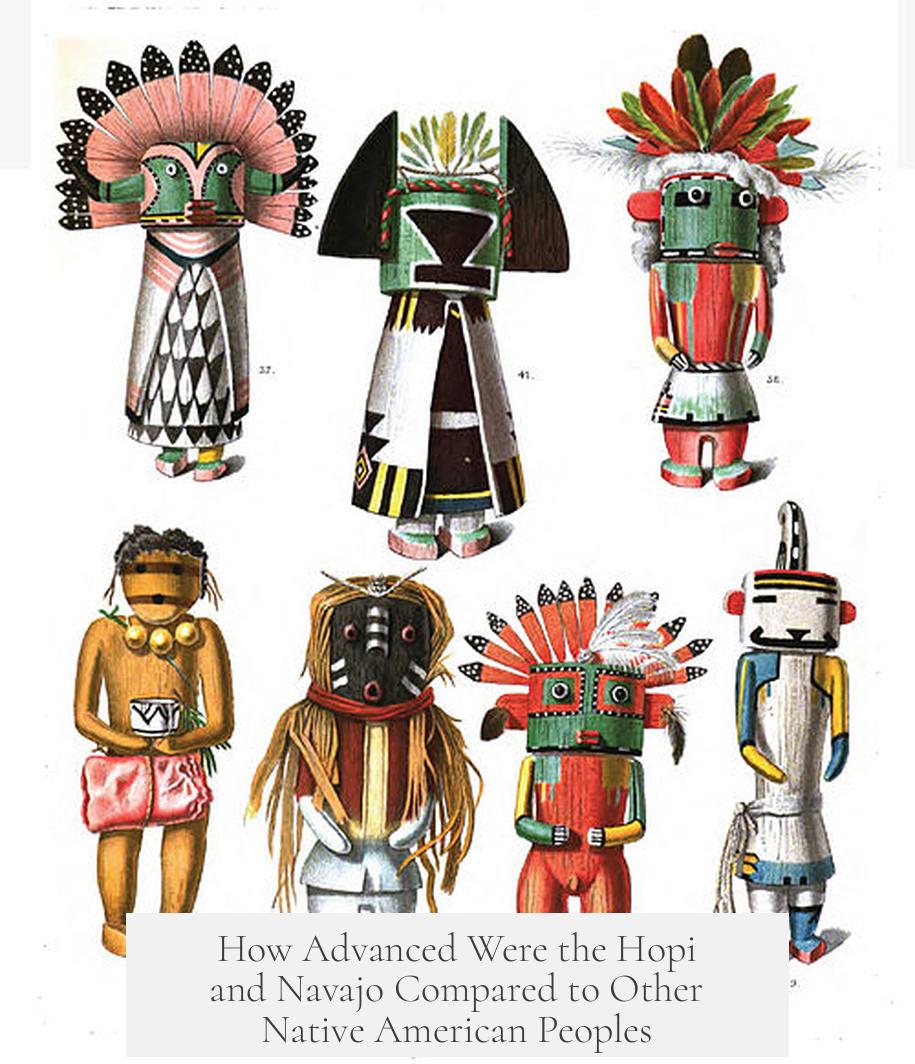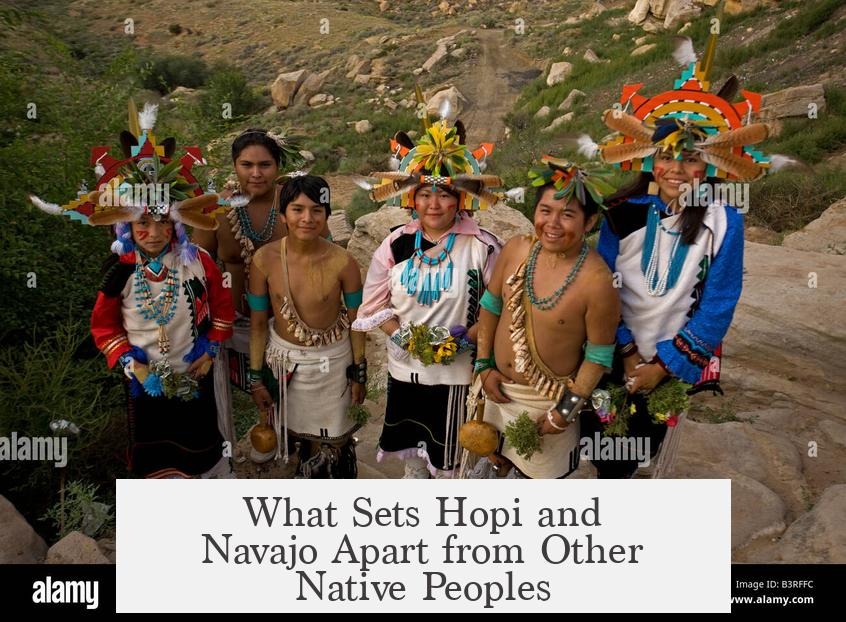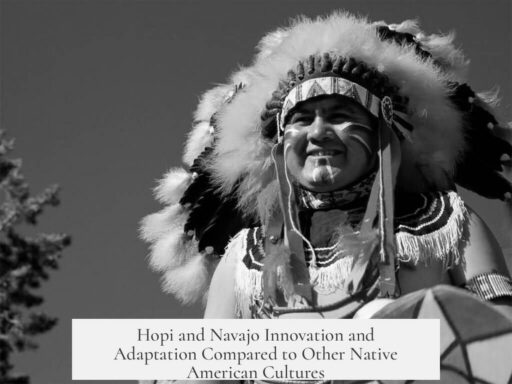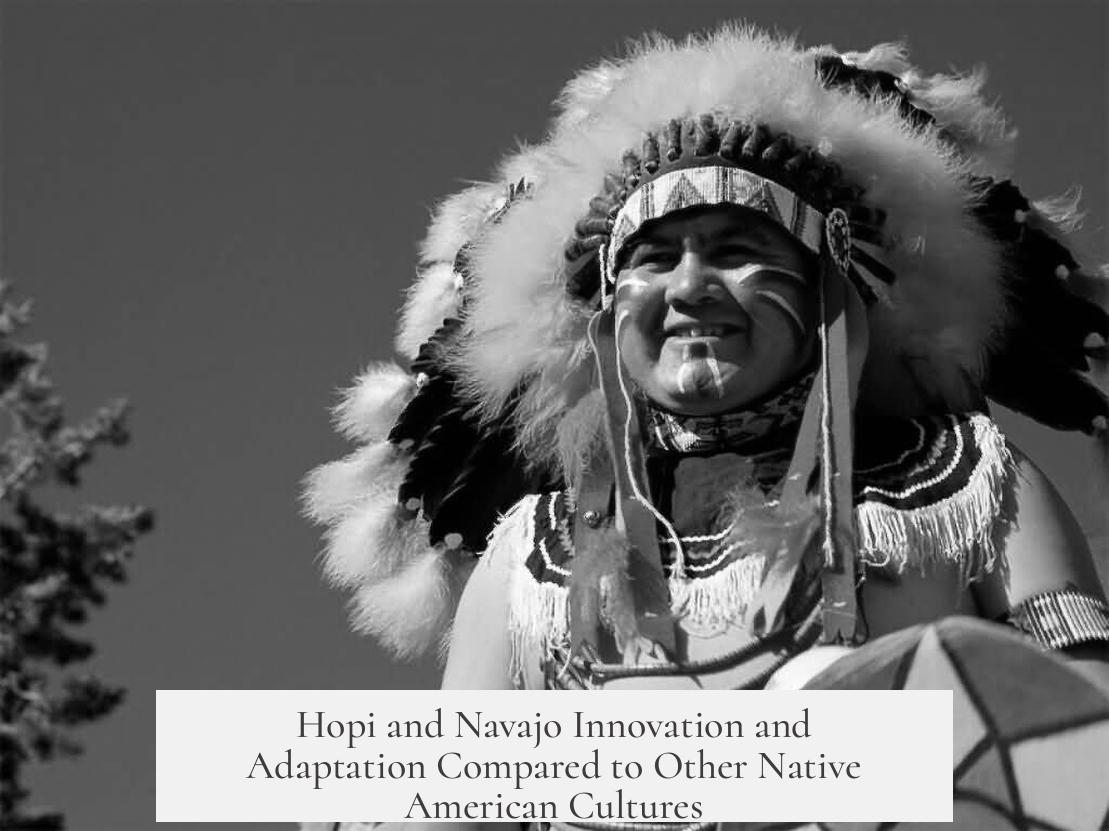The Hopi were more advanced than the Navajo in terms of architecture, agriculture, and trade. The Hopi, as heirs of the Ancestral Puebloans, built large settlements and had complex irrigation. The Navajo arrived later, adopting some Puebloan practices but remained more semi-nomadic hunters and raiders.
The Hopi are part of the Pueblo culture, which includes several ethnic groups in the American Southwest. They descend from the Mogollon, Hohokam, and especially the Ancestral Puebloans. This ancestry links them to major architectural sites like Cliff Palace and Pueblo Bonito. These towns featured multi-story buildings made from stone and adobe. Such structures required significant planning and labor, showing advanced social organization.
The Hopi developed advanced agriculture by diverting rivers for irrigation. They cultivated several corn varieties suited to the harsh Southwest climate. One notable Hopi crop is blue corn, valued for its nutrition and cultural importance. This level of agricultural development stands out against many other Native American groups.
Trade networks extended from the Pueblo cultures southward to the Toltecs in Mexico. This network allowed the exchange of goods, ideas, and technologies, reflecting Hopi engagement in long-distance commerce. Their agricultural surplus supported these trade activities.
The Navajo, by contrast, arrived in the American Southwest around 1400 CE. They belong to the Na-Dene language family, linked to peoples mainly in Alaska and western Canada. The Navajo were semi-nomadic and practiced hunting and raiding. Their early lifestyle is visible in many personal names connected to warfare.
Before European contact, the Navajo interacted with the Pueblo peoples. Despite often raiding the Pueblo communities, they adopted maize agriculture and incorporated Pueblo myths and rituals. However, the Navajo did not fully rely on farming, maintaining a more flexible subsistence strategy.
| Aspect | Hopi (Pueblo) | Navajo |
|---|---|---|
| Origin | Descended from Ancestral Puebloans | Na-Dene migrants, arrived ~1400 CE |
| Settlement | Permanent large stone pueblos | Semi-nomadic hunters and raiders |
| Agriculture | Extensive irrigation, multiple corn types | Adopted maize but not reliant |
| Trade | Long-distance trade reaching Toltecs | Less emphasis on trade networks |
| Culture | Rich rituals and settled lifestyle | Mixed raiding culture with ritual adoption |
- The Hopi represent a continuation of advanced Pueblo cultures with complex architecture and agriculture.
- The Navajo arrived later as semi-nomadic peoples, integrating some Pueblo practices over time.
- The Hopi built large permanent settlements; the Navajo maintained flexible, hunter-raider lifestyles.
- The Hopi had extensive trade networks; the Navajo were less involved in distant trade.
How Advanced Were the Hopi and Navajo Compared to Other Native American Peoples?

Let’s cut to the chase: The Hopi and Navajo peoples showcase fascinating differences in advancement and culture within the Native American tapestry. The Hopi stand out as inheritors of a rich, intricate civilization with complex agriculture, remarkable architecture, and extensive trade, while the Navajo, coming later, molded a dynamic semi-nomadic lifestyle that blended warrior traditions with selective adoption of Puebloan innovations.
Now, let’s dig deeper to understand how each culture compares to other Native American groups, especially in terms of technological and societal advancements.
The Hopi: Masters of Southwestern Innovation
The Hopi belong to the broader Pueblo culture, spanning the U.S. Southwest. This larger Pueblo culture serves as a continuation—and beneficiary—of earlier civilizations like the Mogollon, Hohokam, and the Ancestral Pueblo (Anasazi). These predecessors set a high bar for architectural and agricultural progress, which the Hopi proudly uphold.
Think about this: The Ancestral Pueblo constructed famed structures like Cliff Palace and Pueblo Bonito. These are not just big homes; they are stone marvels with hundreds of rooms, built in naturally fortified cliff alcoves or arranged as planned communities. Then there’s Casas Grandes (further south), displaying urban planning centuries before Europeans arrived.
This is not your average “hunter-gatherer” setup. The Hopi and their Pueblo kin developed advanced agriculture too. They engineered river diversions for irrigation in an arid climate—impressive hydraulic work! Not only that, they selectively bred multiple varieties of maize to thrive in differing southwestern microclimates.
Here’s a little botanical bragging rights: The Hopi are famously known for blue corn, a staple crop with nutritional and cultural importance. Blue corn’s high protein content and complex flavors weren’t accidental; they reflect sophisticated agricultural knowledge.
Perhaps even more astonishing is their extensive trade network reaching all the way to the Toltecs, ancient Mesoamerican culture in present-day central Mexico. This trade included copper, macaws, shells, and specialized crafts. Such long-distance exchange points to a highly organized society with social and economic systems far beyond local barter.
The Navajo: Dynamic Adaptors and Cultural Integrators
By contrast, the Navajo people represent a much later arrival to the Southwest—around 1400 CE according to archaeological evidence. They are part of the Na-Dene linguistic family, connecting them to indigenous groups primarily from Alaska and western Canada.
Unlike the sedentary Hopi, the Navajo initially lived as semi-nomadic hunters and raiders. This origin colors their identity—many Navajo names mean “warrior” and “raider,” underscoring a lifestyle centered around mobility and conflict rather than settled agriculture.
Despite their newcomers’ status, the Navajo didn’t isolate themselves. Long before Spanish colonization in the 1500s, they engaged in substantial cultural exchange with the Pueblo. Their raids targeted Pueblo settlements, but interaction wasn’t all conflict.
Navajo people adopted maize agriculture, although they never depended entirely on it. They also embraced certain Pueblo myths and rituals, adapting them into their own spiritual and cultural frameworks. This selective assimilation shows a pragmatic and creative approach to culture, blending new and old knowledge efficiently.
So, though they arrived later and didn’t establish large urban centers, the Navajo displayed an advanced social adaptability and cultural complexity. Their ability to harmonize hunting, raiding, farming, and cultural borrowing sets them apart.
What Sets Hopi and Navajo Apart from Other Native Peoples?

The Hopi demonstrate classic hallmarks of early advanced civilizations: settled communities, large-scale architecture, agriculture tailored to challenging environments, and long-distance trade. This contrasts with many other Native groups who maintained nomadic or semi-nomadic hunter-gatherer lifestyles.
The Navajo, on the other hand, provide an intriguing case of cultural synthesis and adaptation. Their advanced societal form isn’t in monumental architecture but in how they adapted on the frontier—melding traditions, adopting agriculture without losing warrior traits, and integrating Puebloan cultural elements.
Compared to other Native American groups, both exhibit advancement but along different lines. Hopi match or exceed many in architectural and agricultural innovation, while Navajo excel in adaptability and cultural negotiation.
Why Does This Matter?
Understanding the Hopi and Navajo’s relative advancement challenges oversimplified views of Native American history. These cultures prove that “advancement” isn’t a single mold but a spectrum shaped by geography, history, migration, and interaction.
Moreover, these distinctions help us appreciate the complexity of indigenous North America before Europeans disrupted centuries of development. The Hopi’s architectural feats and agricultural mastery, alongside the Navajo’s flexible resilience and cultural blending, enrich our understanding of what “advanced” truly means.
Final Thoughts
If you ask “How advanced were the Hopi and Navajo compared to other Native Americans?” the answer is clear:
The Hopi stand tall as heirs of an architectural and agricultural legacy among the most sophisticated in North America. Meanwhile, the Navajo shine as innovative newcomers, blending warrior spirit with clever cultural adoption.
Each reveals a different kind of advancement—one rooted in ancient, settled tradition; the other in adaptable, mixed heritage. Both deserve recognition for shaping the cultural mosaic of the American Southwest.
So next time you hear about Native American peoples, remember: advancement wears many hats, sometimes made of adobe and corn, other times of resilience and cultural fusion.
How did Hopi architecture compare to other Native American cultures?
The Hopi, as part of the Pueblo culture, descended from advanced groups like the Ancestral Pueblo. They built large, complex towns such as Cliff Palace and Pueblo Bonito, showcasing advanced architectural skills unmatched by many contemporaries.
What made Hopi agriculture stand out among Native peoples?
Hopi agriculture was advanced, employing river diversion for irrigation. They developed multiple corn varieties adapted to Southwest climates. Their blue corn is a notable crop unique to their tradition and environment.
In what ways were the Navajo culturally different from the Pueblo peoples?
The Navajo arrived later around 1400 CE as semi-nomadic hunters and raiders, unlike the sedentary Pueblo. They were part of the Na-Dene migration from the north and initially relied less on agriculture compared to Pueblo populations.
Did the Navajo adopt cultural traits from the Hopi and other Pueblo groups?
Yes, before Spanish contact, the Navajo had significant cultural exchange with the Pueblo. They adopted maize farming and incorporated some Pueblo myths and rituals into their own culture, blending traditions over time.
How extensive was the Hopi and Pueblo trade network compared to other groups?
The Pueblo trade network was extensive, reaching as far as the Toltecs in central Mexico. This network was larger and more complex than many other Native American trade systems of the period.



